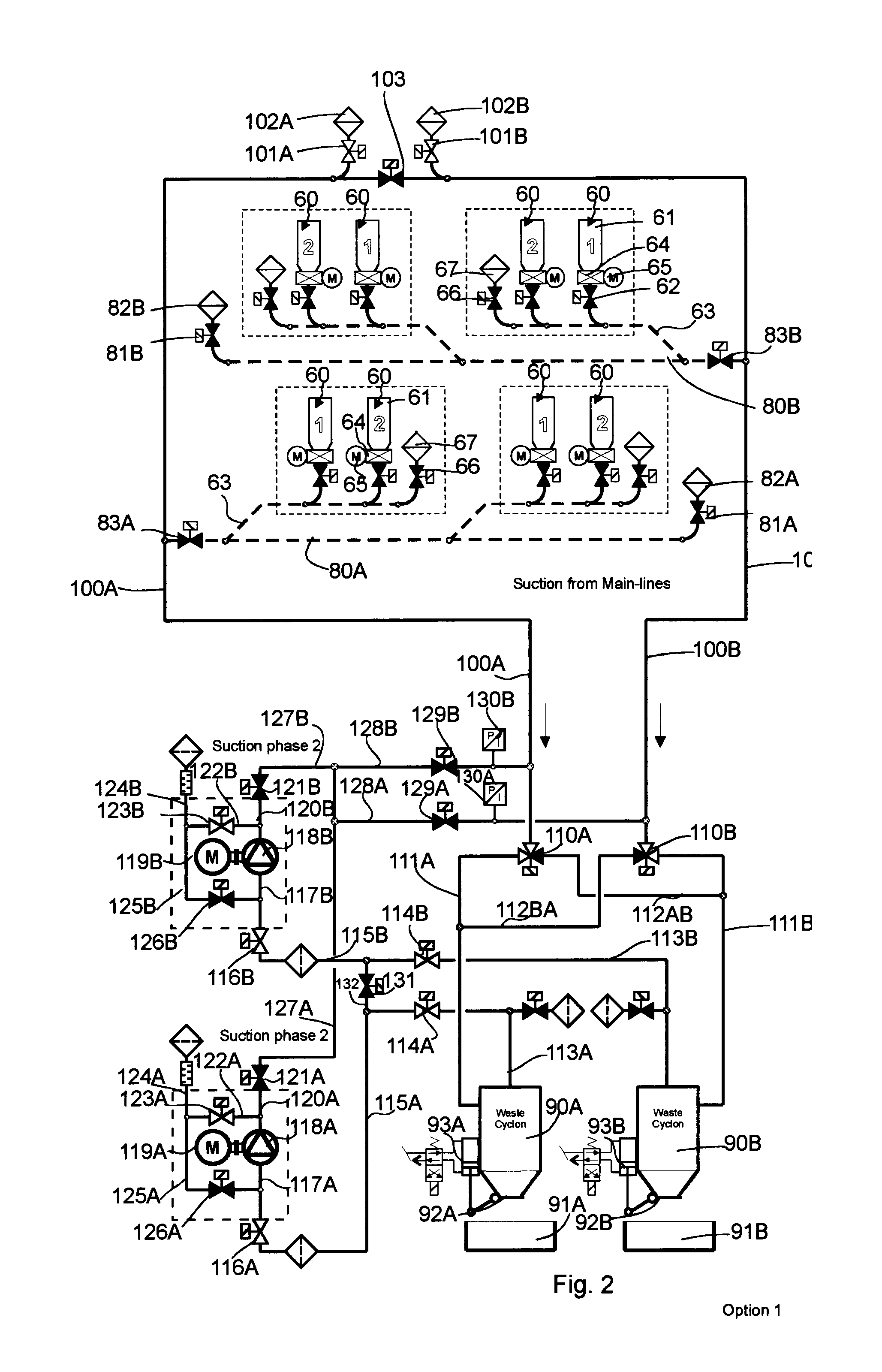Method and pneumatic material conveying system
a conveying system and pneumatic technology, applied in the field of pneumatic material conveying system, can solve the problems of high energy consumption, noise, high air flow in the piping, etc., and achieve the effect of effective rinse and drying, and reducing the diameter of the main conveying pip
- Summary
- Abstract
- Description
- Claims
- Application Information
AI Technical Summary
Benefits of technology
Problems solved by technology
Method used
Image
Examples
Embodiment Construction
[0026]FIGS. 1-4 present a simplified diagram of a pneumatic material conveying system, more particularly a wastes conveying system, according to one embodiment according to the invention. The figure presents a main conveying pipe 100A, 100B for material, along the side of which main conveying pipe at least one, typically many, branch conveying pipes 80A, 80B are arranged. The embodiment of the figures comprises two branch conveying pipes 80A, 80B. Input points 60 of waste material are arranged along the side of the branch conveying pipes. The input point 60 is a feed-in station of material, more particularly of waste material, intended to be conveyed, from which station the material, more particularly waste material, such as household waste, intended to be conveyed is fed into the conveying system. The system can comprise a number of feed-in stations 60, from which the material intended to be transported is fed into the conveying piping. In the figures the components of an input poi...
PUM
 Login to View More
Login to View More Abstract
Description
Claims
Application Information
 Login to View More
Login to View More - R&D
- Intellectual Property
- Life Sciences
- Materials
- Tech Scout
- Unparalleled Data Quality
- Higher Quality Content
- 60% Fewer Hallucinations
Browse by: Latest US Patents, China's latest patents, Technical Efficacy Thesaurus, Application Domain, Technology Topic, Popular Technical Reports.
© 2025 PatSnap. All rights reserved.Legal|Privacy policy|Modern Slavery Act Transparency Statement|Sitemap|About US| Contact US: help@patsnap.com



